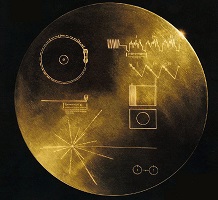 | Forum Threads |  |
 | Random Photo |  |
 | Member Poll |  |
|
 Voyager Enters Interstellar Space Voyager Enters Interstellar Space |  "Voyager is in interstellar space — the space between the stars." - Dr. Ed Stone, Voyager Project Scientist
 We've heard it a few times already, but now NASA has finally confirmed it - Voyager has reached interstellar space a the first man made object. This is a profound moment in human history, up there with the first circumnavigation of the planet Earth, the first spaceflight, and the first human on another celestial object (the Moon). But I fear it will largely go unnoticed in today's world of multimedia celeb gossip - ask people in 5 years time where they were when it was announced that mankind had managed to send an object out of the solar system and they'll look at you with a puzzled face. We've heard it a few times already, but now NASA has finally confirmed it - Voyager has reached interstellar space a the first man made object. This is a profound moment in human history, up there with the first circumnavigation of the planet Earth, the first spaceflight, and the first human on another celestial object (the Moon). But I fear it will largely go unnoticed in today's world of multimedia celeb gossip - ask people in 5 years time where they were when it was announced that mankind had managed to send an object out of the solar system and they'll look at you with a puzzled face.
Many centuries from now some civilization will find this golden disk - maybe it will be a human civilization retracing their roots. All we know today is that it has finally made it's way to the interstellar medium; traveling among the stars.
|
|
| |
| |
| Comments |
on September 12 2013 21:14:28
Wow... I'd forgotten what the front page looks like when there's a news item.
Is this a general observation or a StarTrek reference on V'ger? 
"human civilization retracing their roots" |
on September 12 2013 22:05:01
A general observation from several sci-fi shows.
I have been thinking about posting a news item for a few weeks, but wanted it to be profound news. Something that will receive a lot of reporting in the general media, but will be forgotten by them tomorrow. When I saw this I knew it was the one |
on September 13 2013 11:32:10
Voyager 1 has entered interstellar space, but it has not actually left the solar system, and will not do so in our lifetime. In about 300 years it will reach the beginning of the Oort cloud, and it will take it another 30,000 years before it exits the Oort cloud and actually leaves the solar system. |
on September 13 2013 12:05:21
It has crossed the heliopause, which basically means it's now in interstellar space, though there are objects out there which are gravitationally bound to our star.
The most distant of these gravitationally bound objects have theoretical orbits that reach out to a great distance, which is another 30.000 years away - that is correct, but using that as a measuring device is somewhat murky as Voyager will actually visit another star (Gliese 445) in 40.000 years - guess it has nitro for the final 10ky leg
Anyhow NASA uses the Heliopause as the definition of reaching interstellar space - it is where the Sun's solar wind is stopped by the interstellar medium. It is where the magnetic fields change direction, where particles in space come from "elsewhere", and where there is a sharp increase in galactic cosmic rays.
Also looked into the actual date (it was reported by NASA yesterday), but the date when this happened was the 25th of August 2012, which was the day you, me and Vester were in Flensburg |
on September 13 2013 12:40:02
The Oort cloud is in interstellar space, but it is also a part of the solar system. They are not mutually exclusive terms. NASA was careful not to say that Voyager had left the solar system, but to specify that it was in interstellar space. NASA calls the inside of the Heliopause "the solar bubble", which, I suppose, is what laypeople usually consider the solar system, and which is the cause for all the misunderstanding in the press.
Voyager 1 will "pass within 1.6 light years of [Gliese 445] in about 40,000 years", but that's not very close. At 17 km/s (61,200 km/h) it would take Voyager 1 over 28,000 years to close the 1.6 light-year gap. At this time, Gliese 445 will be about 3.45 light-years from the sun. Voyager 1 is currently about 0.002 light-years from the sun. |
on September 13 2013 12:57:10
Voyager 1 will "pass within 1.6 light years of [Gliese 445] in about 40,000 years", but that's not very close. At 17 km/s (61,200 km/h) it would take Voyager 1 over 28,000 years to close the 1.6 light-year gap. At this time, Gliese 445 will be about 3.45 light-years from the sun. Voyager 1 is currently about 0.002 light-years from the sun.
It will be closer to Gliese then to the earth at that point
I understand the Oort cloud, my point was that it's a hypothetical cloud, in interstellar space, gravitationally bound to our star...
It basically comes down to defining the Solar System at the heliopause or at the Sun's calculated Hill sphere. |
on September 13 2013 13:41:06
It will be closer to Gliese then to the earth at that point
Yes, well at that time it will be at least 10,000 years since it left the solar system.
It does come down to how we define the solar system, and it is indeed defined by the end of the sun's gravitational dominance (Hill sphere), which also defines the boundaries of the Oort cloud. It doesn't matter that the Oort cloud is hypothetical; the sun's gravity and its reach are not.
The Heliosphere, or 'solar bubble' is defined by the dominance of the solar wind, however, when we think of the solar system, I think most of us think of the objects that are bound by the sun's gravity, and the reason most people think of the solar system as consisting of the planets and maybe the Kuiper belt, is that they don't know how far the gravitational reach is, and that they have never heard of the Oort cloud. |
on September 14 2013 10:48:54
It does come down to how we define the solar system, and it is indeed defined by the end of the sun's gravitational dominance (Hill sphere)
The point at which the Solar System ends and interstellar space begins is not precisely defined since its outer boundaries are shaped by two separate forces: the solar wind and the Sun's gravity. The outer limit of the solar wind's influence is roughly four times Pluto's distance from the Sun; this heliopause is considered the beginning of the interstellar medium.[56] However, the Sun's Hill sphere, the effective range of its gravitational dominance, is believed to extend up to a thousand times farther.[111]
Oh proclaiming certainty - once you all said it was my vice  |
on September 14 2013 12:38:54
Yeah, that's exactly what I have been saying... The solar system and interstellar space overlap, since interstellar space begins at the end of the Solar Bubble (Heliosphere), while the Solar System ends at the boundary of gravitational dominance (Hill sphere).
I'll let a member of the actual NASA JPL Voyager team explain:
[...] many people don't realize the Oort cloud is in interstellar space AND it's considered part of the solar system. We knew many media would make the error and we tried to make it clear in interviews. [...] none of our materials say we've exited the solar system. Thankfully, some media have recognized the distinction. Mashable.com has a good story that explained the difference. http://mashable.com/2013/09/12/voyager-1-interstellar-space/ It's actually a cool factoid that the public could learn about our solar system. @VeronicaMcg Social Media Team |
on September 14 2013 16:09:24
it is indeed defined
is not precisely defined
Yeah, that's exactly what I have been saying...
Aha  |
on September 14 2013 18:21:47
I apologize for the clumsy phrasing of that Wikipedia paragraph, oh wait, I didn't write that!
Let me repeat, for the slow: There is no boundary between the solar system and interstellar space because they overlap. Maybe you should read the rest of that article you quoted from.
But don't feel bad, you were only off by a factor of A THOUSAND.
 |
|
|
| Post Comment | |
Please Login to Post a Comment.
|
|
|
 | Login |  |
Forgotten your password? Request a new one here.
|
| | 
 | Last Seen Users |  |
 | Obituaries |  |
You must login to post a message.
|
| | 
|